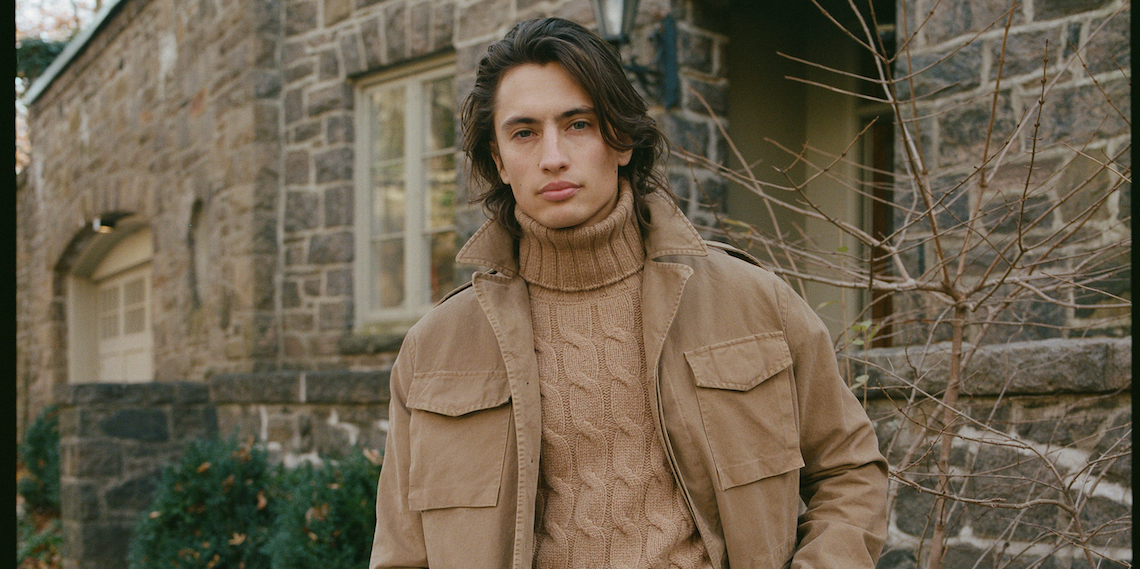Over dinner last year, Alison Loehnis, the president of Net-a-Porter and Mr Porter, and womenswear designer Nili Lotan got to talking about the potential for luxury menswear.
Lotan had only ever designed for women, but Loehnis encouraged her to try designing menswear.
“She said, ‘Why not give it a try? No one is doing what you’re doing in the menswear space,’” Lotan said.
Lotan said that, for men interested in high fashion, their style options were streetwear and sports brands like Nike or Stussy, or luxury options like Brunello Cucinelli, with only a few options in the middle like Theory. Her first menswear collection aimed at that middle space between ultra-casual and ultra-luxury was released at the end of July, sold direct-to-consumer and with her brand’s long-term wholesale partners Net-a-Porter (through Mr Porter), MatchesFashion, Ssense, Saks Fifth Avenue and Bergdorf Goodman.
The collection is noticeably devoid of one of the dominant fashion trends of the last 10 years: streetwear influences. The 26-piece collection has plenty of slacks, cashmere sweaters, leather accessories and blazers, but no sneakers, no hoodies and no graphic prints.
Lotan is one of the fashion designers looking beyond the hypebeast-driven direction that menswear has taken in the years since Supreme and Louis Vuitton first collaborated in 2017. Hypercasualization and seeing a hoodie on the runway was novel in the early days of streetwear rise, but after years of practically every luxury brand in the world releasing sneakers, hiring streetwear designers like Nigo and Virgil Abloh, and incorporating drops, the novelty has worn off.
Instead, tailoring is having a resurgence. For example, the tailoring-focused brand Canali struggled with flagging revenue for years during the rise of streetwear as demand for traditional suits fell. But in July, president and CEO Stefano Canali said demand for tailoring is up. In turn, as of the end of May, the brand’s first half of the year revenues were up 73% year-over-year.
Ad position: web_incontent_pos1
That interest has filtered down to fast fashion, as well. BoohooMan launched a men’s tailoring collection in mid-July. Notably, for both Canali and BoohooMan, the tailored styles that have taken off the most are those that combine suiting silhouettes with lighter colors and more casual fits. Both brands have introduced less structured suit jackets and hybrid shirt-jackets in more playful colors like yellow and coral and materials like linen.
Shane Chin, head of design at BoohooMAN, sees the blurring of the formal and informal as a key part of modern menswear.
“There are so many ways to style tailoring items by merging them with streetwear pieces, and this is something we are seeing more and more of each year,” he said.
Just as more formal brands have introduced streetwear styles, the opposite is true. Quintessential streetwear brand Aime Leon Dore has dozens of tailored sportcoats and loafers in its recent collections alongside basketball jerseys and hoodies, for example.
The Outnet, another division of Net-a-Porter, traditionally focused on womenswear until it launched menswear in May. Since then, it has seen a healthy mix of demand for both tailoring and streetwear looks, according to managing director Emma Mortimer.
Ad position: web_incontent_pos2
“We see men shopping from suits to sneakers to big ticket items and designer brands,” she said. “It’s genuinely a wonderful mix.”
But tailored, formal styles are clearly in high demand at The Outnet.
“Since the pandemic, we’ve seen women going for more occasion dressing as semi-normal life comes back. And for menswear, we’re seeing that naturally happen as well,” she said.
But the distinction between formal and informal is less relevant in luxury. Vanessa Friedman, writing for the New York Times in February, remarked that streetwear is dead – in the sense that its signature silhouettes and ethos have been so thoroughly infused into the luxury fashion industry, that the two are indistinguishable. According to Lotan, the only real distinction now is in the construction, material and care that goes into each product.
“The most important thing for luxury men’s fashion is sophistication and comfort,” Lotan said. “Hoodies and sneakers can be luxury, but they’re not, inherently. But neither is a suit luxury, inherently. It all has to do with the materials — the gorgeous cashmere and brushed Italian wool — and the perfect fit.”




